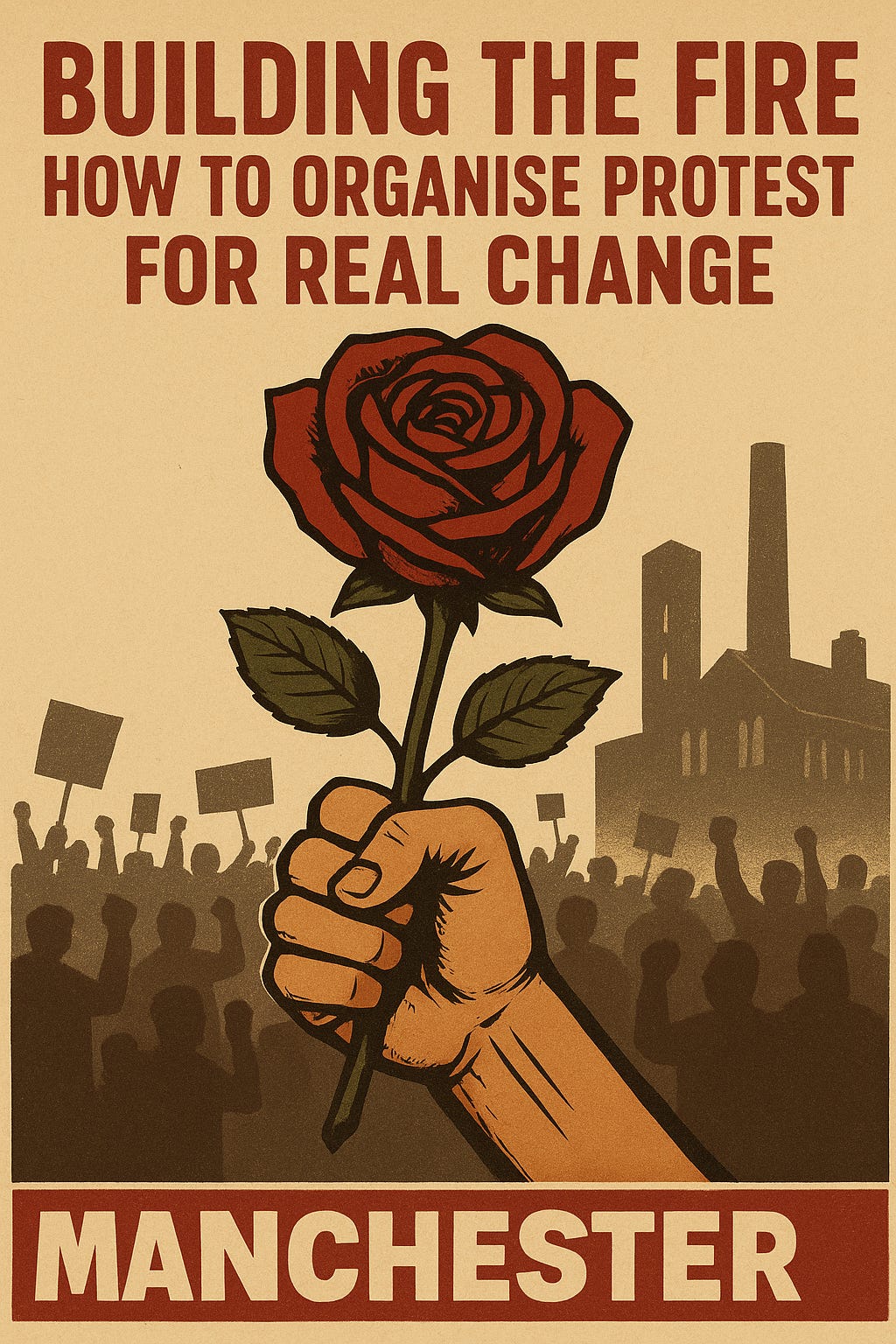Building the Fire: How to Organise Protest for Real Change
Dr. Adam North looks at the history of effective protests to see what lessons can be learnt.
Every generation rediscovers the same truth—those in power rarely give up privilege willingly. Rights are not handed down; they are wrested from the grip of entrenched interests. Protest is the lever by which societies shift. But for protest to move beyond spectacle and create genuine transformation—they must be organised with precision, strategy, and solidarity.
Lessons from History
Recently I read Christopher Clark’s Revolutionary Spring, and it’s a great insight into the different factors that shape protest and the factors that lead to their success or failure. Clark investigates the revolutions of 1848 to show how, despite being fragmented and often crushed, they reshaped Europe. They reveal both the power and peril of protest. Across Paris, Berlin, Vienna, and Milan, ordinary citizens confronted monarchies and challenged the status-quo. Where protestors were united, change was made possible. Where they fractured—whether by class, ideology, or national interest—the counter-revolution was swift.
The 20th century echoes this lesson. The US civil rights movement succeeded not because it was loud, but because it was disciplined. Boycotts, marches, sit-ins were often well planned and relentless in their nonviolent pursuit of change. The anti-apartheid struggle in South Africa likewise endured because it linked grassroots organising with international solidarity.
The Elements of Effective Protest
In my research on effective protest, I have learnt these insights:
Unity of Purpose
Protest collapses without clarity. Successful movements articulate simple, resonant demands. For instance: bread, peace, and land in Russia; voting rights in Selma; an end to apartheid in Pretoria. Fragmentation, which was 1848’s fatal weakness, remains the greatest danger today.
Organisation over Spontaneity
Outbursts of rage may ignite the spark, but organisation sustains the fire. Clark notes how revolutionary committees in 1848 often struggled to coordinate across cities and classes. By contrast, the disciplined networks of Solidarity in 1980s Poland showed how organisation could exhaust authoritarian regimes. Just as the solidarity among Swedish workers has exhausted Tesla’s efforts to exploit them.
Tactical Diversity
No single tactic wins alone. Mass marches grab headlines but strikes create structural problems and damage economies; occupations force negotiation; mutual aid builds resilience; violence and threats create fear in the powerful. The genius of past movements lies in their tactical flexibility—shifting between confrontation and endurance.
(I have an upcoming article in the Journal of Pacifism and Nonviolence on the effectiveness of threats of violence as a nonviolent tactic so stay tuned for updates!)
Control of the Narrative
Every protest is a battle of stories. Governments will attempt to frame protestors as radicals, criminals, or terrorists. The most effective movements—civil rights in the US, Gandhi’s campaign in India—knew how to project moral legitimacy, reframing repression as proof of their cause.
Endurance and Sacrifice
Power yields slowly. The revolutions of 1848 often failed because protestors imagined instant transformation. But the lesson of later movements is endurance: decades of struggle, building layer upon layer until institutions themselves crack In the meantime, organisation and time enables protestors to build their own institutions and project power.
What This Means for Manchester—and Beyond
Protest today must be more than a march through the city centre. It must be rooted in communities, linked across movements, and prepared for the long haul. Manchester’s radical tradition—Peterloo, suffragettes, trade unionism—was built not on one-day spectacles but on years of patient, courageous organising. The potential for effective organisation is there, but it will require collaboration, cooperation, and sometimes concession.
If wealth inequality, climate collapse, or authoritarian drift are to be confronted, protest must embrace both the passion in outrage and the discipline of organisation. Spontaneity awakens the streets. Organisation wins the future.


